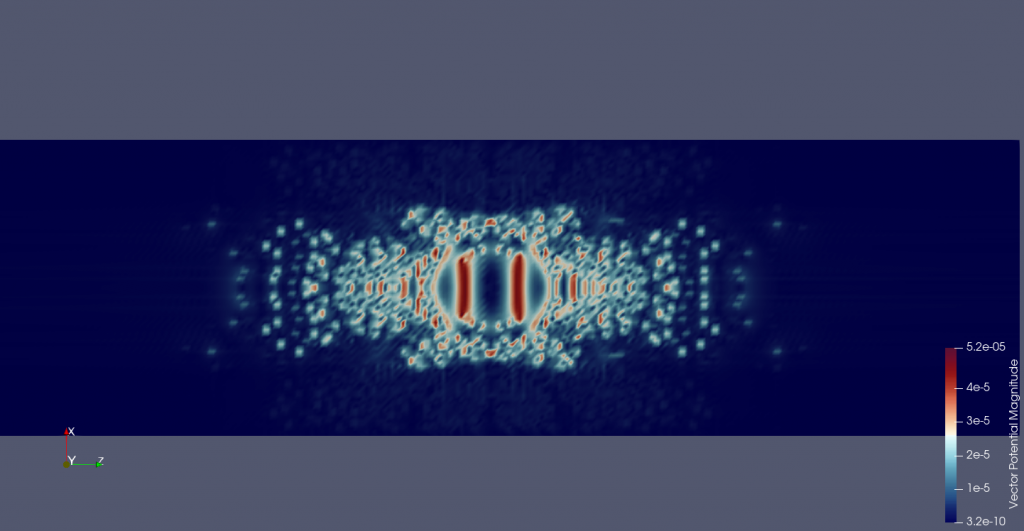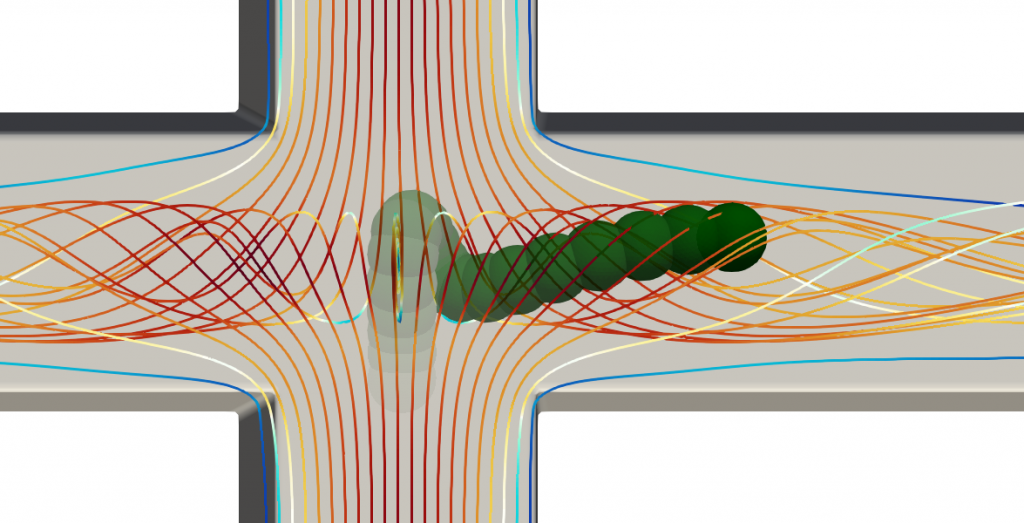Research
Pairs and trains of particles in inertial microfluidics
Inertial microfluidics can be used to arrange particles along the channel axis. This effect makes flow cytometry and cell encapsulation easier. We are investigating how particles interact and form pairs and trains in inertial microfluidics.
Inertial flow field decomposition
We are developing a set of analysis techniques based on velocity field decomposition and multipole expansion to understand the complex interactions between particles and fluid in the inertial regime.

Particle dynamics in cross-slot junctions
We are investigating the dynamics of particles in cross-slot junctions to understand how particle properties (such as size and deformation) can be deducted from the particle dynamics in the junction. The US company Cytovale is using this idea for sepsis diagnostics.
